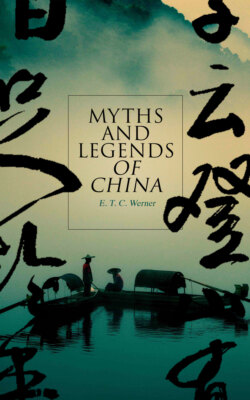Читать книгу Myths and Legends of China - E. T. C. Werner - Страница 39
На сайте Литреса книга снята с продажи.
Language
ОглавлениеOriginally polysyllabic, the Chinese language later assumed a monosyllabic, isolating, uninflected form, grammatical relations being indicated by position. From the earliest forms of speech several subordinate vernacular languages arose in various districts, and from these sprang local dialects, etc. Tone-distinctions arose—i.e. the same words pronounced with a different intonation came to mean different things. Development of these distinctions led to carelessness of articulation, and multiplication of what would be homonyms but for these tones. It is incorrect to assume that the tones were invented to distinguish similar sounds. So that, at the present day, anyone who says ma will mean either an exclamation, hemp, horse, or curse according to the quality he gives to the sound. The language remains in a primitive state, without inflexion, declension, or distinction of parts of speech. The order in a sentence is: subject, verb, complement direct, complement indirect. Gender is formed by distinctive particles; number by prefixing numerals, etc.; cases by position or appropriate prepositions. Adjectives precede nouns; position determines comparison; and absence of punctuation causes ambiguity. The latter is now introduced into most newly published works. The new education is bringing with it innumerable words and phrases not found in the old literature or dictionaries. Japanese idioms which are now being imported into the language are making it less pure.
The written language, too well known to need detailed description, a thing of beauty and a joy for ever to those able to appreciate it, said to have taken originally the form of knotted cords and then of notches on wood (though this was more probably the origin of numeration than of writing proper), took later that of rude outlines of natural objects, and then went on to the phonetic system, under which each character is composed of two parts, the radical, indicating the meaning, and the phonetic, indicating the sound. They were symbols, non-agglutinative and non-inflexional, and were written in vertical columns, probably from having in early times been painted or cut on strips of bark.
